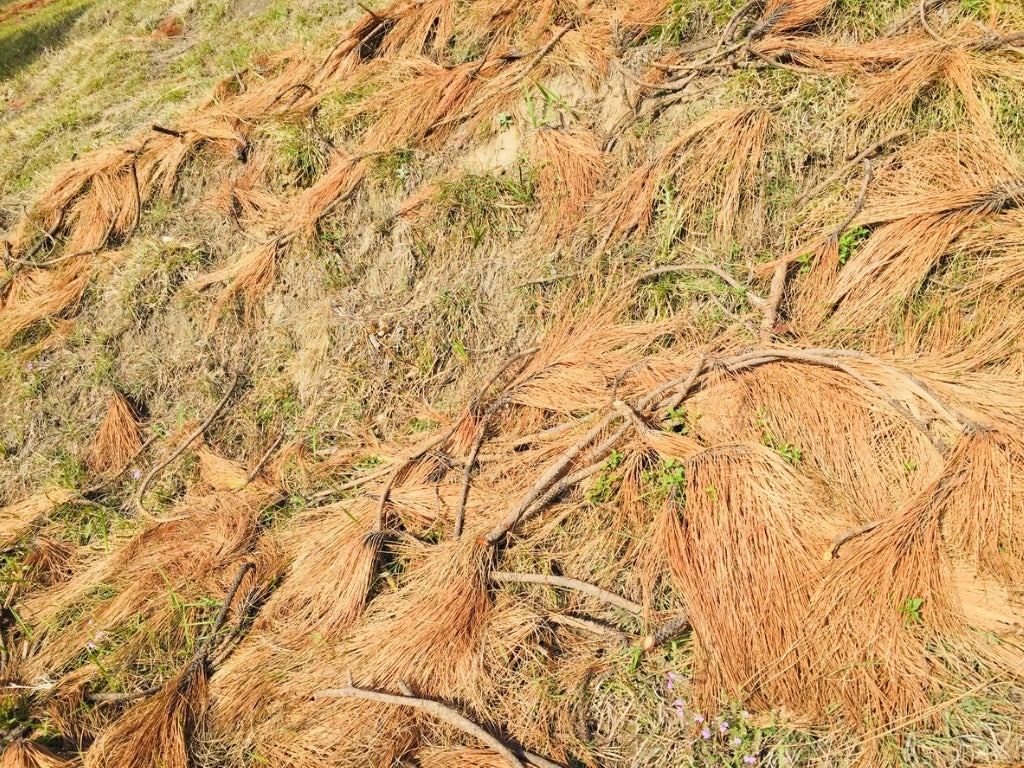Pine Tree Dying Inside Out: Needles Browning In Center Of Pine Trees


Pine trees fill a very specific role in the landscape, serving as year-round shade trees as well as windbreaks and privacy barriers. When your pine trees turn brown from the inside out, you may wonder how to save a dying pine tree. The sad truth is that not all pine tree browning can be stopped and many trees die from this condition.
Environmental Causes of Pine Tree Browning
In years of heavy rain or extreme drought, pine trees may brown in response. Browning is often caused by an inability of the pine tree to uptake enough water to keep its needles alive. When moisture is overly abundant and drainage is poor, root rot is often the culprit. As roots die, you may notice your pine tree dying from the inside out. This is a way for the tree to protect itself from total collapse. Increase drainage and take measures to prevent pines from standing in water-- if the tree is young, you may be able to trim the rotted roots away from the plant. Proper watering should allow this condition to correct itself over time, though the browned needles will never re-green. If drought is the culprit for needles browning in center of pine trees, increase watering, especially in the fall. Wait until the soil around your pine tree is dry to the touch before watering again, even in the heat of summer. Pines don't tolerate wet conditions-- watering them is a delicate balance.
Pine Needle Fungus
Many types of fungus cause brown banding in the center of needles, but needles browning in the center of pine trees is not always indicative of any particular fungal disease. If you're certain that your tree is getting the right amount of water and no signs of pests are present, you may be able to save your tree with a broad-spectrum fungicide containing neem oil or copper salts. Always read all directions, since some fungicides can cause discoloration on certain pines.
Pine Trees and Bark Beetles
Bark beetles are insidious beasts that tunnel into trees to lay their eggs; some species may spend most of their lives inside your tree. Usually, they won't attack trees that aren't already stressed, so keeping your tree well watered and fertilized is a good prevention. However, if your tree has many small holes bored through branches or the trunk weeps sap or has a sawdust-like material coming from them, it may already be infected. Your pine tree may suddenly collapse, or it may give a warning with droopy, brown needles. The damage is caused by a combination of bark beetle tunneling activities and the nematodes that ride along with them into the heart of pine trees. If you're seeing symptoms and signs of bark beetles, it's already too late. Your tree needs to be removed because it poses a very real safety hazard, especially if branches contain bark beetle galleries. Limb collapse can cause serious damage to anything on the ground below. As you can see, pine trees turn brown from inside out for a variety of reasons. Pinpointing the most likely cause in your tree is important to keeping it healthy.
Gardening tips, videos, info and more delivered right to your inbox!
Sign up for the Gardening Know How newsletter today and receive a free copy of our e-book "How to Grow Delicious Tomatoes".

Kristi Waterworth was a regular contributor to Gardening Know How for many years, answering countless queries on plant pests and diseases.
-
 Looking For Plants To Give You The Soft And Fuzzies? Try These 5 Fuzzy Leaf Plant Options
Looking For Plants To Give You The Soft And Fuzzies? Try These 5 Fuzzy Leaf Plant OptionsLovers of texture, drama, silver foliage and tactile plants will adore these special sensory garden additions. These fuzzy leaf plant options will leave you all aglow
By Susan Albert
-
 Get Ready For A Summer Of Hummers! Grow These Full Sun Hummingbird Plants and Flowers
Get Ready For A Summer Of Hummers! Grow These Full Sun Hummingbird Plants and FlowersIf you’re lucky enough to enjoy a sunny backyard, make sure you are maxing out on your pollinator opportunities and grow these full sun hummingbird plants and flowers
By Tonya Barnett